Mastering Circle Area Calculation: An Engaging Guide
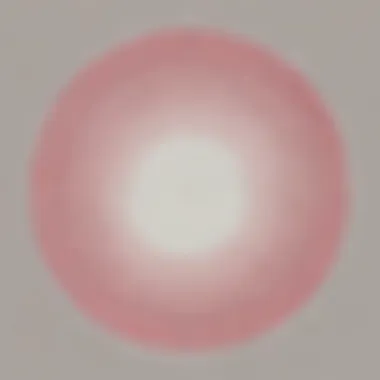
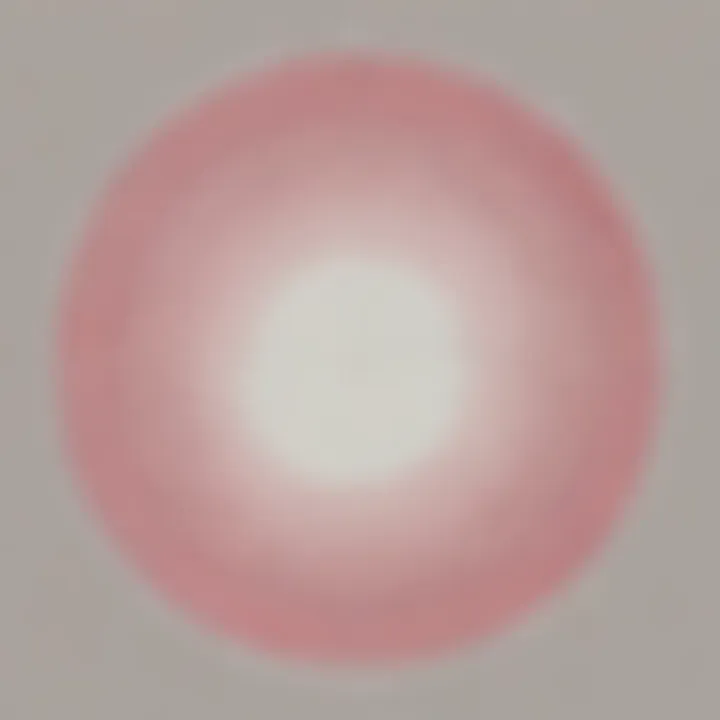
Intro
Understanding how to calculate the area of a circle is a valuable skill, especially for young learners. The concept is based on two fundamental elements: the radius and the constant known as pi. Pi, approximately equal to 3.14, is vital in various mathematical contexts, especially when working with circles. This guide aims to simplify these concepts, making them accessible and engaging for elementary school children, parents, and caregivers.
The area of a circle is determined using a specific formula: Area = π × r², where "r" represents the radius. This formula is not just a set of numbers but a way to understand how space inside a circle is calculated. By exploring creative activities, fun quizzes, and fact-based articles, can enhance the learning experience and ensure that the topic remains interesting.
In this article, we will discuss various approaches to mastering the area of a circle, highlighting the importance of visual and hands-on activities to solidify understanding.
Creative Activities
Engaging children with practical applications helps create clearer ideas about mathematical concepts. Below are some engaging activities that facilitate learning about circles and their areas.
Craft Ideas
- Circle Collages: Use colored paper to cut out circles of different sizes. Children can label the radius and calculate the area for each circle. This will allow them to visualize the relationship between radius and area.
- Circle Charts: Create charts showing various items that are circular in shape such as wheels, coins, and plates. Let the children measure and calculate their areas using the formula.
Step-by-Step Guides
- Creating a Circle Collage:
- Circle Measuring Contest:
- Gather materials: paper, scissors, a ruler, and markers.
- Cut out circles of different sizes.
- Measure the radius of each circle.
- Calculate the area using the formula and write it next to each circle.
- Gather circular objects around the home.
- Measure each object's radius.
- Calculate the areas and compare to find which one covers the most space.
Educational Value
These activities provide numerous educational benefits. They promote critical thinking, enhance spatial awareness, and develop fine motor skills. More importantly, they make mathematics tangible and relatable, encouraging a hands-on approach to learning.
Fun Quizzes
Quizzes can be a fun way to reinforce learning. They help assess understanding and build confidence in solving math-related problems.
Quiz Topics
- Understanding pi and its relation to circles
- Calculating the area of a circle
- Recognizing real-life examples of circles
Question Types
The quizzes can include multiple-choice questions, fill-in-the-blank exercises, and visual puzzles. This variety keeps children engaged and allows them to learn in a way that suits their individual learning styles.
Knowledge Reinforcement
Quizzes serve as an excellent tool to reinforce knowledge. They provide immediate feedback to both learners and educators, clarifying any concepts that may still cause confusion.
Fact-Based Articles
Fact-based articles can provide a wealth of information related to circles and pi.
Topics
These articles cover a range of subjects including history of pi, applications of circles in daily life, and examples of famous circles around the world.
Engaging Content
These articles present information in an interesting manner, using simple language and relevant images. They help facilitate a deeper understanding of the subject matter, making learning enjoyable.
Understanding Circles
Understanding circles is crucial in the context of geometry, particularly when calculating areas. A circle is a simple shape that appears often in mathematics and the real world. By grasping the fundamentals of circles, one can appreciate their applications in various fields such as architecture, engineering, and art. This section will cover the definition, key components, and characteristics of circles, allowing readers, especially children, to understand the basic concepts required for area calculations.
Definition of a Circle
A circle can be defined as a shape where all points are equidistant from a fixed center point. This distance is known as the radius. The unique property of a circle is that every point on its boundary maintains this constant distance from the center. This makes circles different from other shapes, like squares or triangles, which have straight edges and varying internal angles.
Key Components of a Circle
Understanding the key components of a circle is vital for area computation. These components include:
- Radius
The radius is half the diameter of a circle. It measures the distance from the center of the circle to any point on its circumference. This straightforward concept simplifies calculations for the area of a circle, as area formulas rely heavily on the radius. The radius is often preferred for this article due to its direct relationship with area and simplicity, making it easier for young learners to grasp. - Diameter
The diameter measures the distance across the circle, passing through its center. Its length is twice that of the radius. While the diameter provides an expanded view of the circle's width, it may complicate area calculations since the area formula involves the radius. Therefore, while knowing the diameter is helpful, the radius remains more practical for calculating area. - Circumference
The circumference is the total distance around the circle. It is calculated using the formula C = 2πr, where "C" is the circumference and "r" is the radius. Understanding circumference is important, but it doesn't directly relate to the area calculation. However, it serves as a complementary concept that helps in visualizing the circle's overall shape and size. Knowing the circumference contextually enriches the learning experience, even if it is secondary to the area calculation.
By understanding these components, children can develop a strong foundation in geometry, crucial for solving problems related to circles and their properties.
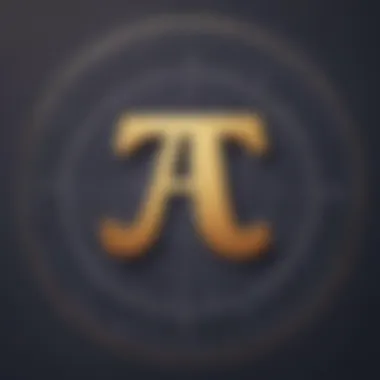
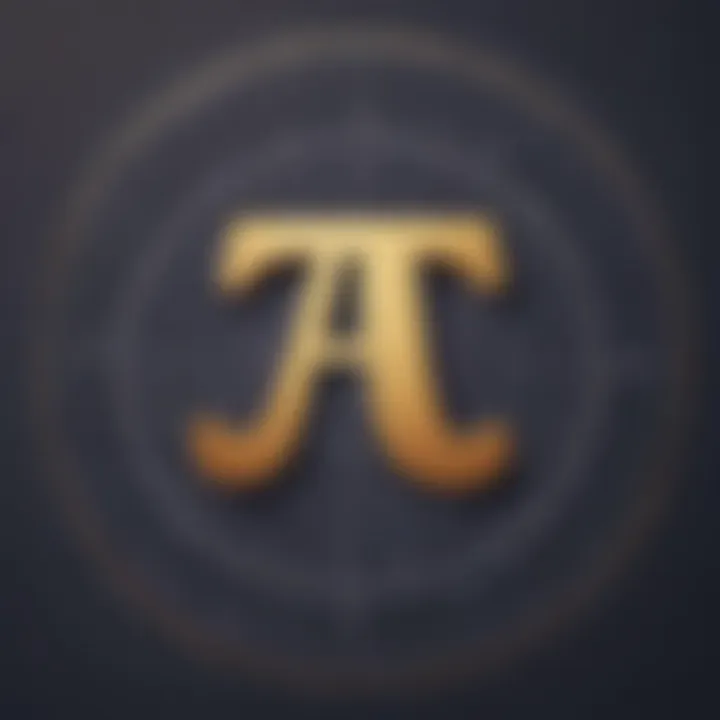
The Importance of Area in Geometry
Understanding the concept of area is fundamental in the field of geometry. Area measures the size of a surface or a region in two-dimensional space. This knowledge is crucial, not only for mathematics but also for practical applications in everyday life. It allows us to solve real-world problems, such as determining the amount of paint needed to cover a wall or the amount of grass required for a lawn.
Area serves as a basis for various mathematical principles and applications, linking it to many real-life scenarios. For example, while assessing the size of land parcels or arranging furniture in a room, the measurement of area becomes essential. x
Additionally, area helps in comparing different shapes. Knowing how to compute the area of basic geometric figures such as triangles, squares, and circles provides a foundation for more complex mathematical concepts.
"Area is especially important when considering designs and layouts in architecture and urban planning."
Area's relevance extends beyond academics; it plays a crucial role in fields like science, engineering, and economics. Schools often teach area calculations as part of geometry lessons, emphasizing its importance in developing problem-solving skills.
What is Area?
Area can be described as the amount of space inside a shape. It is quantified in square units, such as square meters or square feet. This measurement becomes particularly relevant when dealing with two-dimensional figures. Understanding area helps students visualize the space that an object occupies.
When looking at a circle, the area is calculated using specific formulas. The most recognized formula for determining the area of a circle is A = πr², where 'A' is the area, 'π' (pi) is a constant approximately equal to 3.14, and 'r' is the circle's radius. This formula not only simplifies calculations but also reveals the relationship between a circle's radius and its size.
Area vs. Perimeter
It is important to differentiate between area and perimeter, even though they are often discussed together. While area measures the space within a shape, perimeter refers to the distance around that shape.
- Area relates to the surface space contained within an object's boundaries.
- Perimeter quantifies the total length of the sides surrounding the shape.
For instance, if you consider a rectangle, calculating the area involves multiplying the length by the width, whereas the perimeter is found by adding all sides together. Understanding these differences helps students apply the right concepts in various situations, further enhancing their mathematical comprehension and skills.
The Formula for Area of a Circle
Understanding the formula for the area of a circle is essential in geometry. This formula, A = πr², captures the relationship between a circle's radius and its total space. Recognizing how to apply this formula empowers students and enthusiasts alike to solve various geometric problems efficiently. It also highlights the significant role that pi plays within the mathematics of circles. Knowing this relationship makes it easier to grasp larger concepts in geometry and mathematics.
Derivation of the Formula A = πr²
The derivation of the area formula begins with the definition of a circle and its key components. Let's consider a circle with a radius, r. The area can be thought of as how much space is filled within the boundaries of a circle. To derive the area, one can visualize dividing the circle into many small triangles or wedges that aim towards the center.
As you increase the number of slices, the shape begins to look like a triangle in a larger form. When you calculate the area of the circle, the formula A = πr² emerges from the total space these triangles fill. Essentially, you multiply the radius by itself, and then multiply by pi. This relationship reflects how the radius influences the circle's area directly.
Understanding Pi (π)
Definition
Pi (π) is a mathematical constant that represents the ratio of a circle's circumference to its diameter. It is approximately 3.14159 and is a unique number because it appears in various mathematical formulas, especially those related to circles. The introduction of pi simplifies calculations in geometry and trigonometry.
The importance of pi lies in its ability to provide a constant when working with circular dimensions. Its characteristic non-repeating, non-terminating decimal places means that it cannot be precisely represented as a fraction. This feature underlines why pi is a crucial element in this article about area calculation.
Approximate Value
The approximate value of pi is commonly used as 3.14 for simplicity in calculations. However, for more precise needs, more decimal places like 3.14159 may be utilized. Using a more accurate value of pi can yield a more precise area calculation, which is essential in fields requiring advanced measurements, such as construction or engineering.
A unique feature of pi is that its approximate nature allows for a balance between accuracy and simplicity. In educational contexts, using 3.14 can reduce complexity, making it easier for younger students to grasp the concept of area calculation without the overwhelming detail of numerous decimal places. However, knowing that pi is more complex can encourage advanced learners to explore its properties further.
Calculating Area: Step-by-Step Approach
Understanding how to calculate the area of a circle is crucial for grasping basic geometry. This section outlines the systematic method to approach this calculation. A step-by-step approach ensures clarity and avoids mistakes, which is vital for young learners.
Measuring the Radius
To find the area, the first step is measuring the radius of the circle. The radius is the distance from the center of the circle to any point on its edge. This measurement is critical because the area formula directly depends on the radius. Using a ruler or tape measure, you can determine the radius accurately. It's a good practice to measure twice to confirm accuracy. Here is how you can measure:
- Identify the center of the circle.
- Measure to the edge of the circle.
- Ensure that the measurement is in consistent units, such as centimeters or inches.
Applying the Formula
After obtaining the radius, you can apply the formula to find the area. The formula is A = πr², where A represents the area, π (pi) is a constant approximately equal to 3.14, and r represents the radius of the circle. To apply this, follow these steps:
- Square the radius: Multiply the radius by itself. For example, if the radius is 5, then 5 x 5 = 25.
- Multiply by pi: Take the squared radius and multiply it by π. Thus, 25 x 3.14 = 78.5.
This results give you the area of the circle. Remember to keep track of your units, as the area will be squared, such as square centimeters or square inches. Calculating the area with this step-by-step method encourages precision, laying a strong foundation for future mathematical concepts.
Practical Examples of Area Calculation
Practical examples play a key role in understanding the area of a circle. They illustrate how the theoretical concepts translate into real-life situations. When learners see how calculations are applied, they can better grasp the significance of the formulas. This also helps them to visualize the use of mathematics in everyday life.
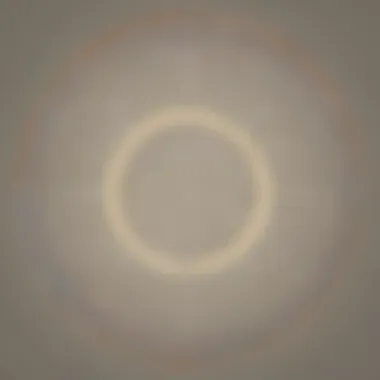
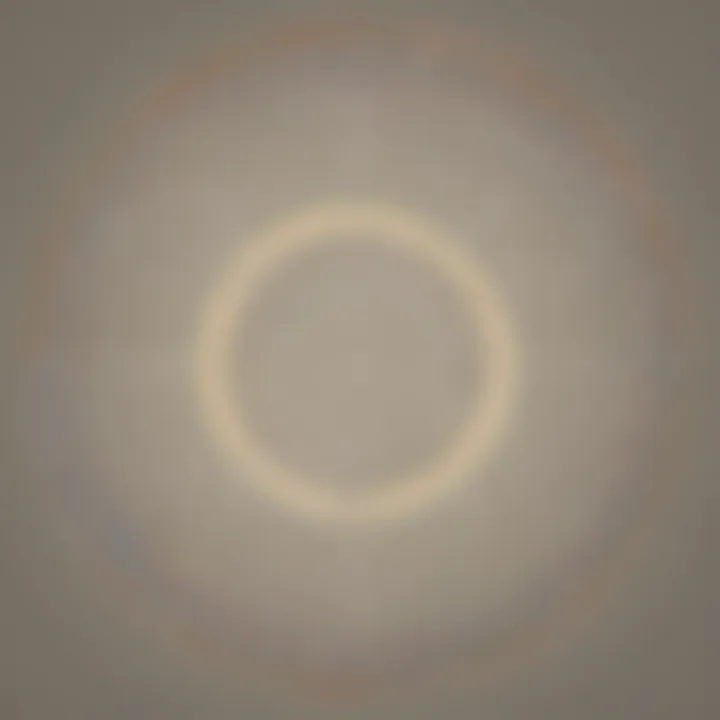
Simple Circle Problems
Simple circle problems provide an excellent introduction to area calculation. These problems often feature easily measurable circles, making it possible to work directly with the formula A = πr². For example, consider a circle with a radius of 3 centimeters.
- Calculate the area:
- Use the formula A = πr².
- A = π × (3)² = π × 9.
- Therefore, A is approximately 28.27 square centimeters.
These straightforward examples allow practice and promote confidence in calculations. Students can explore various radii and see how the area changes, enhancing their understanding of the relationship between radius and area.
Real-World Applications
Gardens
Gardens exemplify a tangible application of circle area calculation. Many garden designs incorporate circular flower beds, which require precise area measurements for planting. Understanding the area of a circle helps gardeners to plan space efficiently. For instance, knowing that a circular flower bed with a radius of 2 meters has an area of approximately 12.57 square meters assists in selecting the right amount of soil and plants.
One key feature of gardens is that they allow individuals to express creativity. The circular design can create aesthetic appeal. However, some gardeners might face a disadvantage. The challenge of calculating areas without proper tools can lead to miscalculations and space issues, underscoring the importance of understanding area calculation.
Parks
Parks also provide a relevant context for discussing the area of circles. Many parks contain circular pathways or grassy areas. Knowing how to find the area helps in park management and development. For instance, if park officials want to plant trees in a circular area with a radius of 5 meters, calculating the area can help determine the number of trees that can be planted without overcrowding.
Parks often attract large numbers of visitors, making them an essential aspect of communities. The circular layout can enhance recreational activities. Yet, park designs sometimes overlook areas needed for seating or play equipment. This is where area knowledge becomes essential in ensuring that available space is optimized effectively.
Understanding circle area calculations not only supports individual projects but also contributes to community planning and biodiversity in shared spaces.
Common Mistakes in Calculation
Understanding the common mistakes in calculating the area of a circle is vital for accurate results. When learners make errors, they can become confused with the principles behind the calculations. Recognizing these missteps helps students avoid pitfalls and strengthens their problem-solving skills. Here, we will delve into two significant areas where mistakes frequently occur: misunderstanding the radius and diameter, and the incorrect use of Pi.
Misunderstanding Radius and Diameter
One key mistake people make is confusing the radius and the diameter. The radius is the distance from the center of the circle to any point on its edge. In contrast, the diameter is twice the length of the radius, stretching from one side of the circle to the other, passing through the center. If someone mistakenly uses the diameter instead of the radius when applying the area formula, it will lead to incorrect calculations.
To clarify:
- Radius: Distance from center to edge.
- Diameter: Distance across the circle, always two times the radius.
This confusion often highlights the importance of precise terminology. Misinterpretations of these terms can cascade into more complex arithmetic errors. When teaching children about circles, stress the definitions actively. Visual aids, like diagrams showing both the radius and diameter, can be incredibly helpful.
Avoiding This Mistake:
- Always remember that the radius is half the diameter.
- Sketch diagrams that label these components clearly.
- Practice identifying the radius and diameter in various circles to reinforce understanding.
Incorrect Use of Pi
Another common error happens with the use of Pi, which is approximately 3.14. Some individuals forget to apply Pi when calculating the area of a circle. Others may simply misuse its value, leading to inaccurate results. This misunderstanding can stem from how students learn about Pi's role in geometry.
The formula for the area of a circle is A = πr². Here, Pi plays a crucial function. It appears as a proportional constant that helps scale the area based on the radius. When someone overlooks the value of Pi, they significantly undermine the accuracy of the area representation.
Tips for Correct Use of Pi:
- Remember to include Pi in calculations. In the case of our area formula, it is essential for proper results.
- Use the value of Pi, either as 3.14 or through a calculator that features the Pi function, depending on context.
- Encourage frequent practice using Pi in various examples to solidify understanding.
Mistakes in math can lead to misunderstanding fundamental concepts. By avoiding errors involving radius, diameter, and Pi, students can build a solid foundation in geometric principles.
This section emphasizes the need for vigilance when teaching and practicing the area of a circle. By addressing these common mistakes, we can enhance understanding and ensure a strong grasp of the subject.
Advanced Concepts Related to Circle Area
Understanding advanced concepts related to circle area enhances our grasp of geometry. One cannot ignore how these principles form a foundation for more complex math topics. Specifically, recognizing the relationship between the circle's area and other geometric figures supports critical thinking.
Area of Sector
The area of a sector is a part of a circle defined by two radii and the arc between them. Imagine slicing a pizza; each slice is like a sector. To calculate this area, we can use the formula:
Area of Sector = (θ / 360) × πr²
Here, θ represents the angle in degrees at the center of the circle. This equation allows students to see how circles relate to angles, bridging geometry and trigonometry.
Understanding sectors is important. It helps students connect concepts like angles, arcs, and areas. Sectors often appear in real-life scenarios, like designing spaces and creating engineering diagrams. Recognizing how to calculate a sector's area enriches one’s geometry toolkit.
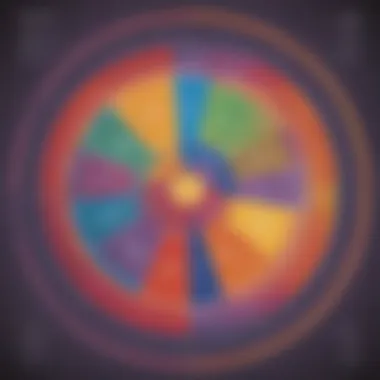
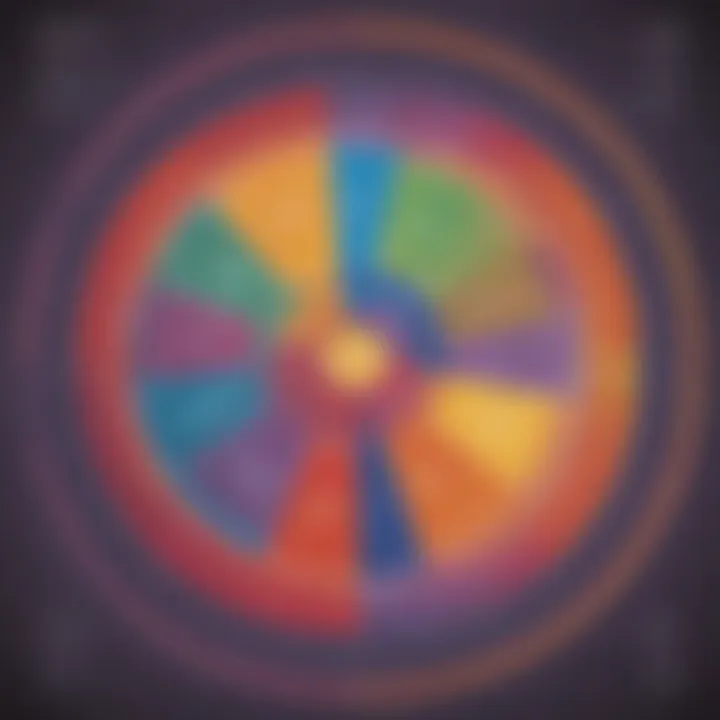
Comparison with Other Shapes
Geometry involves many shapes, each with unique properties. By comparing the area of a circle to that of various other shapes, students can understand these distinctions better.
Area of Triangle
The area of a triangle is computed using the formula:
Area = (1/2) × base × height
Triangles are useful for exploring basic geometry. They help establish a strong foundation before moving into areas involving circles. Triangles show basic principles about height and width in relation to area, making the concept approachable. The triangle's simplicity is beneficial for students learning fundamental area calculations, preparing them for the complexities of a circle's area.
However, triangles may have limitations. Unlike circles, they cannot represent curves or rounded shapes. In this article, we need to emphasize triangles’ utility as a building block in geometry that leads to the study of more complex shapes like circles.
Area of Square
The area of a square is found using this straightforward formula:
Area = side²
Squares offer a clear structure and straightforward calculations. They are frequently used in explaining geometric properties such as symmetry and uniformity. In geometry, the area of a square can be seen as an introductory step toward more intricate shapes like circles.
One unique feature of squares is their equal side lengths, which aids in building foundational skills. These skills are crucial later for understanding more complex formulas related to circles. One downside, though, is that squares can be limiting when discussing circular space. They can only represent rectangular, not oval or circular areas.
Overall, comparing circle areas with triangles and squares illustrates fundamental geometric concepts. This forms a basis for further exploration into the shapes around us. Each concept has strengths and weaknesses, making them essential for any geometry enthusiast.
Interactive Tools for Area Calculation
In the digital age, technology plays a pivotal role in education. Interactive tools for area calculation, especially for circles, offer various benefits for learners. Such tools can enhance understanding, making abstract concepts more tangible. They provide immediate feedback, helping users identify errors quickly. This instant support is vital for building confidence in mathematical skills.
These tools come in different formats. Some are simple web-based calculators, while others are mobile applications designed for interactive learning. Each has unique strengths, yet they all serve the same fundamental purpose: to aid in learning how to calculate the area of a circle effectively.
Online Calculators
Online calculators are widely available and user-friendly. They typically require the user to input the radius or diameter of the circle. Once the measurement is provided, the calculator executes the formula A = πr² automatically, displaying the area immediately. This saves time and reduces the possibility of errors during manual calculations.
Some key points about online calculators include:
- Convenience: Accessible from any device with internet connection.
- Speed: Provides instant results without lengthy calculations.
- Accuracy: Minimizes human error in computation and guarantees precision.
While using online calculators, it's vital they are reliable and easy to use. Recommendations include:
- Websites with a good reputation such as Wikipedia or educational portals.
- Tools that are specifically designed for students, where explanations accompany the results.
Educational Apps
Educational apps are another effective way to learn about circle area calculations. Many apps incorporate interactive elements, allowing users to engage actively with the material. This interactivity can significantly enhance comprehension. Users can play with different values for radius and see how it affects the area in real-time.
Benefits of educational apps include:
- Engagement: Gamified learning can make math more enjoyable for students.
- Diverse Learning Styles: Some apps possess multimedia content, catering to various learning preferences.
- Progress Tracking: Many applications allow tracking of progress over time, providing motivation for the learner.
When choosing educational apps, it's advisable to look for reviews or recommendations from trusted sources. Apps with awards or endorsements from educational organizations can be indicators of quality.
"Interactive tools turn complex calculations into simple tasks, bridging the gap between theoretical knowledge and practical application."
Summary and Closure
In the exploration of calculating the area of a circle, the importance of this topic cannot be overstated. Understanding how to measure and compute areas is a fundamental skill in mathematics. It lays the groundwork for more advanced geometric concepts, vital for success in later academic pursuits. For elementary school children, knowing how to find the area of a circle contributes not only to their math skills but also enhances their spatial reasoning and problem-solving capabilities.
The comprehensive guide offered throughout this article highlights several key aspects. Firstly, the definition of a circle provides a solid foundation for understanding its properties. Secondly, the emphasis on the formula A = πr² (where A stands for area and r for radius) serves as a crucial tool. By breaking down the steps needed for calculations, the article makes the learning process approachable.
Furthermore, recognizing common mistakes and learning to utilize interactive tools connects theoretical knowledge to practical application. Children can benefit significantly from learning through examples and exercises woven into their understanding. This kind of comprehensive coverage ensures a well-rounded grasp of the subject.
Overall, the importance of knowing how to calculate the area of a circle extends beyond the classroom. It is an essential component of daily life, applicable in areas ranging from architecture to science.
"Mathematics is not about numbers, equations, computations, or algorithms: it is about understanding." - William Paul Thurston
With a clear understanding of circles and their areas, a child is better equipped for future learning.
Recap of Key Points
- Definition and Importance: A circle is defined by its radius and diameter. Understanding this helps to grasp its specific properties.
- Formula: The formula A = πr² is fundamental for calculating the area.
- Practical Application: Real-world examples, such as calculating areas in gardens and parks, demonstrate the relevance of understanding circle areas.
- Common Errors: Identifying frequent mistakes aids in grasping concepts properly.
- Interactive Tools: Utilizing online calculators and applications can enhance learning and application skills.
Encouragement to Explore Further
Encouraging inquiry and exploration into the world of mathematics can be hugely beneficial. Students should feel inspired to delve deeper into geometry and other mathematical principles. The world of circles is just the beginning. Related topics, like the area of complex shapes or the principles of measurement, await further investigation.
Parents and caregivers can assist by introducing relevant puzzles or challenges that incorporate areas of circles and other shapes. Real-life applications, such as home projects or outdoor measurements, can turn learning into a fun, engaging experience.







